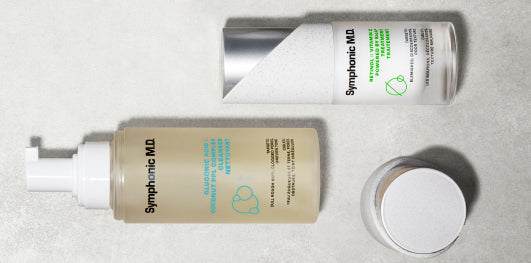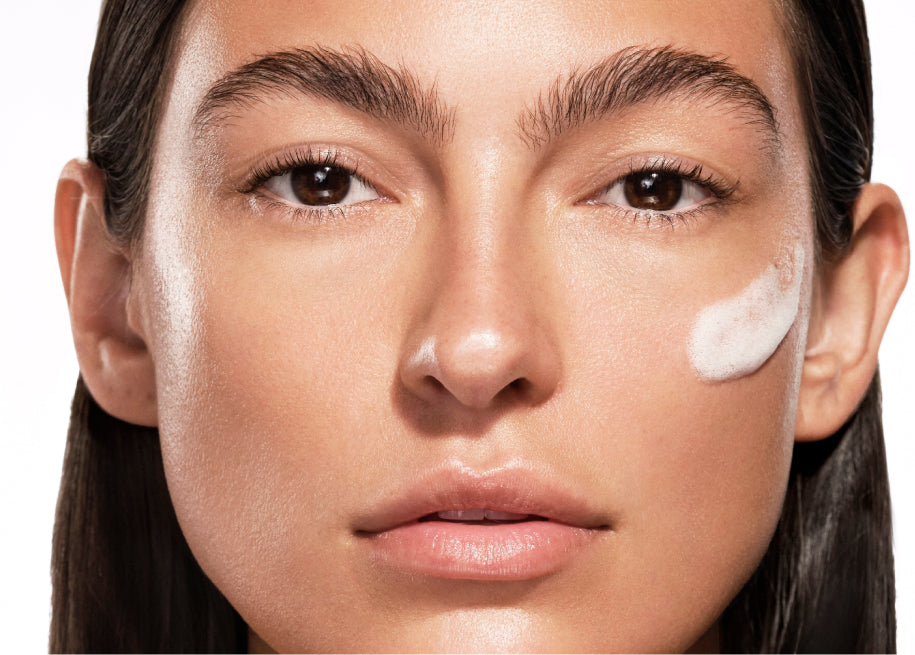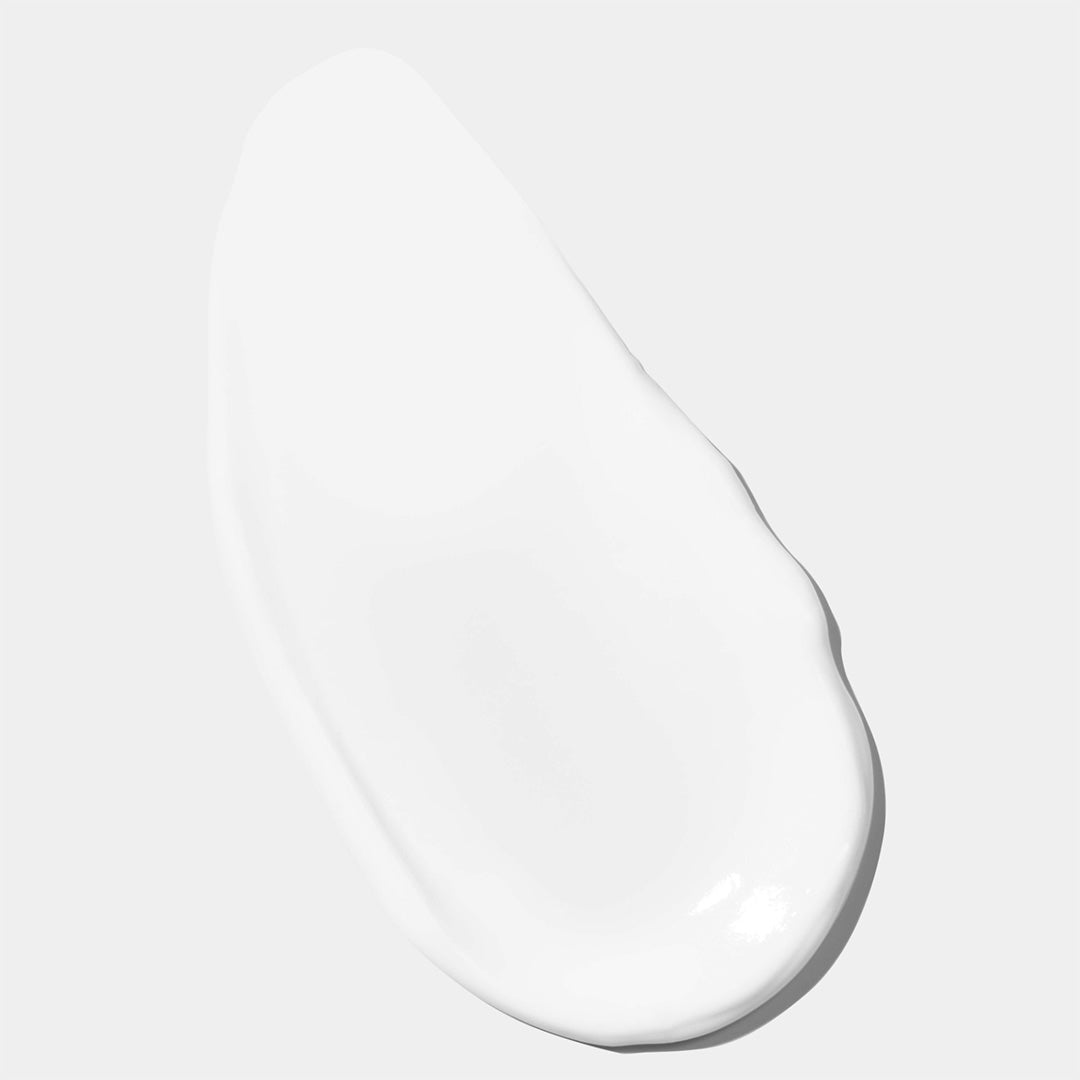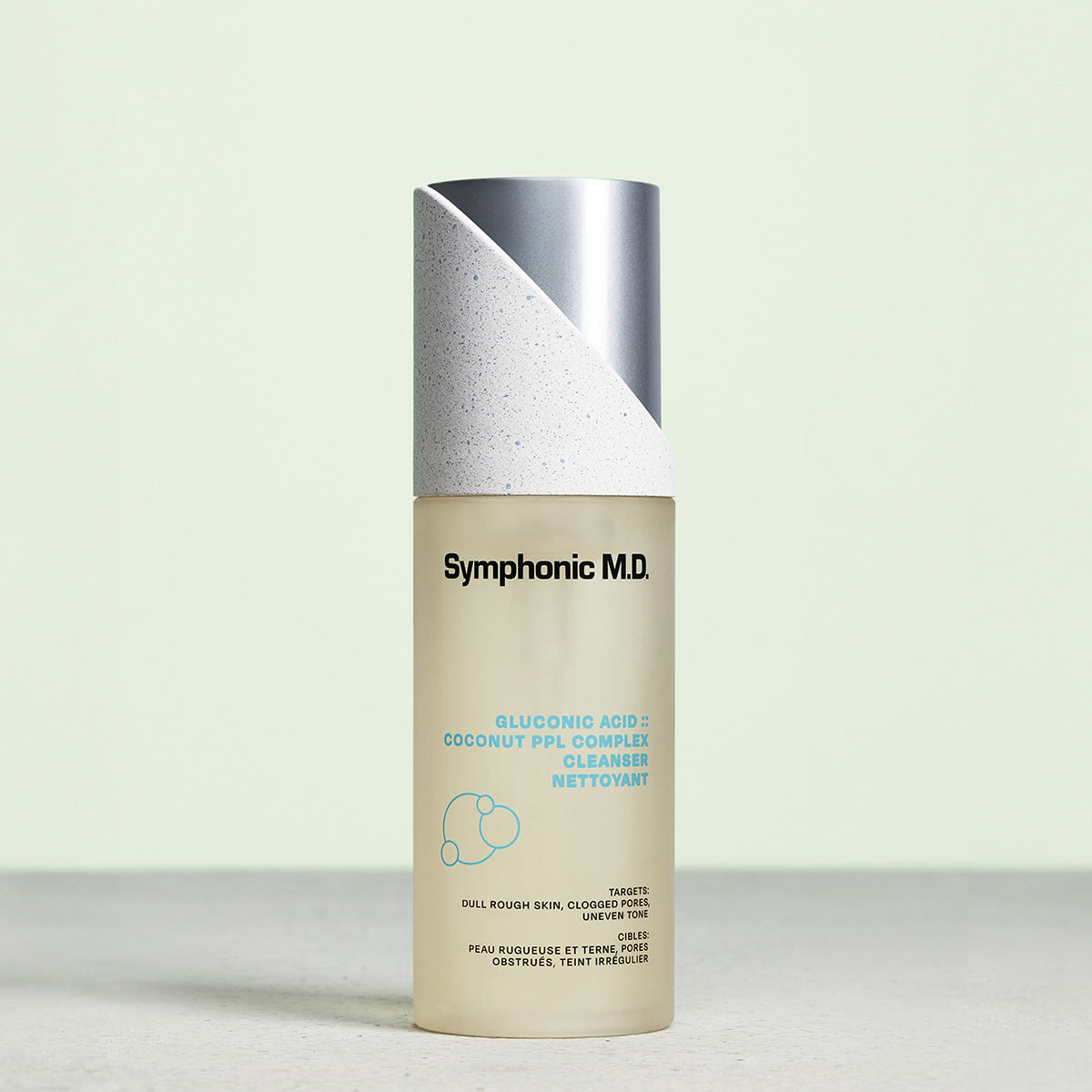We examined this miraculous molecule to find out how it works, the best retinol products for beginners, and how to use them safely for maximum impact.
What is retinol?
Retinol belongs to a family of molecules known as ‘retinoids’, which are all types of vitamin A.
Retinol is a relatively mild retinoid, and it can be found in over-the-counter skin care products such as moisturizers, serums, and oils. Other retinoids, such as tretinoin, are much more powerful and only available via prescription.
How does retinol work?
Retinol accelerates the skin’s cell turnover, so fresh new cells reach the surface faster for a smooth, glowing complexion. This process can also diminish the appearance of hyperpigmentation, age spots, and acne scars. Plus, it prevents pores from clogging, which combats conditions such as acne.
Not only that, retinol boosts collagen and elastin production, which can minimize lines and wrinkles, resulting in a younger-looking appearance. It also has anti-inflammatory properties, which can calm redness and other skin issues.
Understanding retinoid strengths
Retinol is the most commonly used retinoid in skincare products, and it comes in various concentrations, which are clearly labeled on the container.
Retinol is one of the milder retinoids, which is why you can buy it over the counter. But retinoids such as isotretinoin and tretinoin, for example, are only available on prescription
It’s important to understand, however, that retinoids are available in various forms and potencies – and retinol is just one of them.
In scientific terms, vitamin A travels through several different conversion stages in the human body, and this journey is known as the ‘vitamin A pathway’. When it reaches the ‘retinoic acid’ stage, it becomes active and starts to work on your skin.
Each type of retinoid represents a different stage on the pathway – which also determines its strength. The closer it is to becoming retinoic acid, the stronger it is.
Retinol is one of the milder retinoids, which is why you can buy it over the counter. But retinoids such as isotretinoin and tretinoin, for example, are only available on prescription, and are reserved for more severe skin issues.
The higher the strength or concentration of a retinoid, the greater impact it will have on your skin – but with that comes an increased risk of side effects such as redness, peeling, and dryness.
As such, it’s important to use a retinoid that matches your unique skin care needs, and suits your individual tolerance levels.
Strengths of retinol
As mentioned above, retinol is available in different strengths or concentrations – which indicates how much active ingredient the product contains.
The strength you need depends on whether your skin is already tolerant to retinoids, your skin type, and what you would like to achieve.
In fact, a clinical trial about retinol confirmed that a concentration of just 0.1% can significantly improve signs of aging, such as wrinkles and discolouration.
0.01 - 0.03% - Low strength retinol
If you haven’t used a retinoid on your skin before, or you have sensitive skin, start with a low strength retinol, and gradually allow your skin to become used to it.
A low percentage of 0.01 - 0.03% is the best way to begin your retinol journey, whilst effectively reducing the appearance of fine lines, wrinkles, and hyperpigmentation.
Plus, when combined with other antioxidants such as vitamin C, these lower-strength products help protect your skin from the damage caused by pollution.

0.04 - 0.1% - Moderate strength retinol
These medium-strength products are suitable for skin that is already tolerant to retinol, enabling you to continue your retinol journey safely.
Products containing this concentration will give you more impactful results. In fact, a clinical trial about retinol confirmed that a concentration of just 0.1% can significantly improve signs of aging, such as wrinkles and discolouration.
This strength of retinol can also counteract the effects of environmental damage, and prevent thinning of the skin.
0.3 - 1% - High strength retinol
If your skin has built up a tolerance to moderate-strength products, you can move up to a higher strength if you want to enjoy even more benefits from your retinol.
This strength of retinol isn’t for everyone as there’s a much greater risk of side-effects, and it might be too concentrated for your needs. It’s more suited to those seeking help for more severe skin issues, such as deep lines and wrinkles, and more obvious skin tone concerns such as age spots.
If you have sensitive skin, consider sticking to a retinol product containing less than 0.5% to prevent any unpleasant side-effects.
1%+ - Prescription only retinol
Products containing 1% retinol or more are only available on prescription, and usually used to treat stubborn conditions such as acne or hyperpigmentation when over-the-counter remedies have failed.
If you think this concentration of retinol might be suitable for you, speak to a medical professional or dermatologist who can evaluate whether this is the appropriate remedy.
How to use retinol
The key to successfully introducing retinol into your skincare routine is to incorporate it slowly, and - more importantly - be patient! Your skin needs to develop a certain tolerance to retinol, allowing you to benefit from the impacts whilst avoiding unpleasant side effects.
Retinol can make your skin more sensitive to the sun, so always apply it at night, and use a sunscreen the following day.
Begin with a low-strength product, and apply it once or twice a week for three weeks to see how your skin reacts. If your skin seems to be tolerant, you can build up to three or four nights each week for a further three weeks. If you don’t experience any issues, apply it to your daily skin care routine.
After a couple of months of using lower-strength retinol, you might consider increasing the strength of retinol. Make sure you incorporate each strength gradually into your routine and only increase it if you feel you need to.
Keep a close eye on any negative changes to your skin, and cut your usage back if you experience any problems. Retinol can make your skin more sensitive to the sun, so always apply it at night, and use a sunscreen the following day.
Using retinol with other products
Retinol can react with other active ingredients, so be mindful of what your other skincare products contain.
Alternatively, you could try a combined product, such as our Retinol :: Vitamin C Powered by BioA3 Treatment.
Avoid using retinol with AHAs (alpha-hydroxy acids) and BHAs (beta-hydroxy acids) as they act as exfoliants, and as such, their combined use can irritate the skin and cause dryness and redness. It is possible to use these ingredients on alternate nights, but again, use them sparingly to begin with and build up gradually.
Common skincare ingredients you can safely use with retinol include niacinamide, hyaluronic acid, salicylic acid, azelaic acid, peptides, ceramides, and sunscreen.
Vitamin C is regularly used alongside retinol as the two ingredients can enhance each other’s effects. Some people use vitamin C in the morning and retinol in the evening. Alternatively, you could try a combined product, such as our Retinol :: Vitamin C Powered by BioA3 Treatment.
Retinol use for sensitive skin
Even people with sensitive skin can benefit from the powerful skin-enhancing properties of retinol.
As we’ve already indicated, it’s important to introduce it gradually, and use a low-strength concentration between 0.01 - 0.03%. Ideally, keep your skin hydrated and nourished by using a retinol-infused cream to prevent any adverse reactions.
You can even create a ‘retinol sandwich’ by applying moisturizer under and over a retinol serum, without reducing its effectiveness.

How to introduce retinol to your skincare routine
Retinol is a powerful active ingredient, and as such, it should always be used carefully.
It’s normal to experience a small degree of irritation, such as dryness and redness. However, this should subside by the fourth week, and there are several steps you can take to minimize any adverse effects, whilst getting the most from your products.
Choose the right product
You can find retinol in products such as serums, moisturizers, oils, and night creams. Select a product that works well with your skin type, and easily fits into your regular skincare routine.
Sensitive or dry skin types, for example, might benefit from a retinol-infused moisturizer or night cream such as our Retinol :: Vitamin C Powered by BioA3 moisturizer. Whereas normal or oily skin types might react best to a serum.
You might need to experiment to find the right product, or you could consult a dermatologist for professional advice.
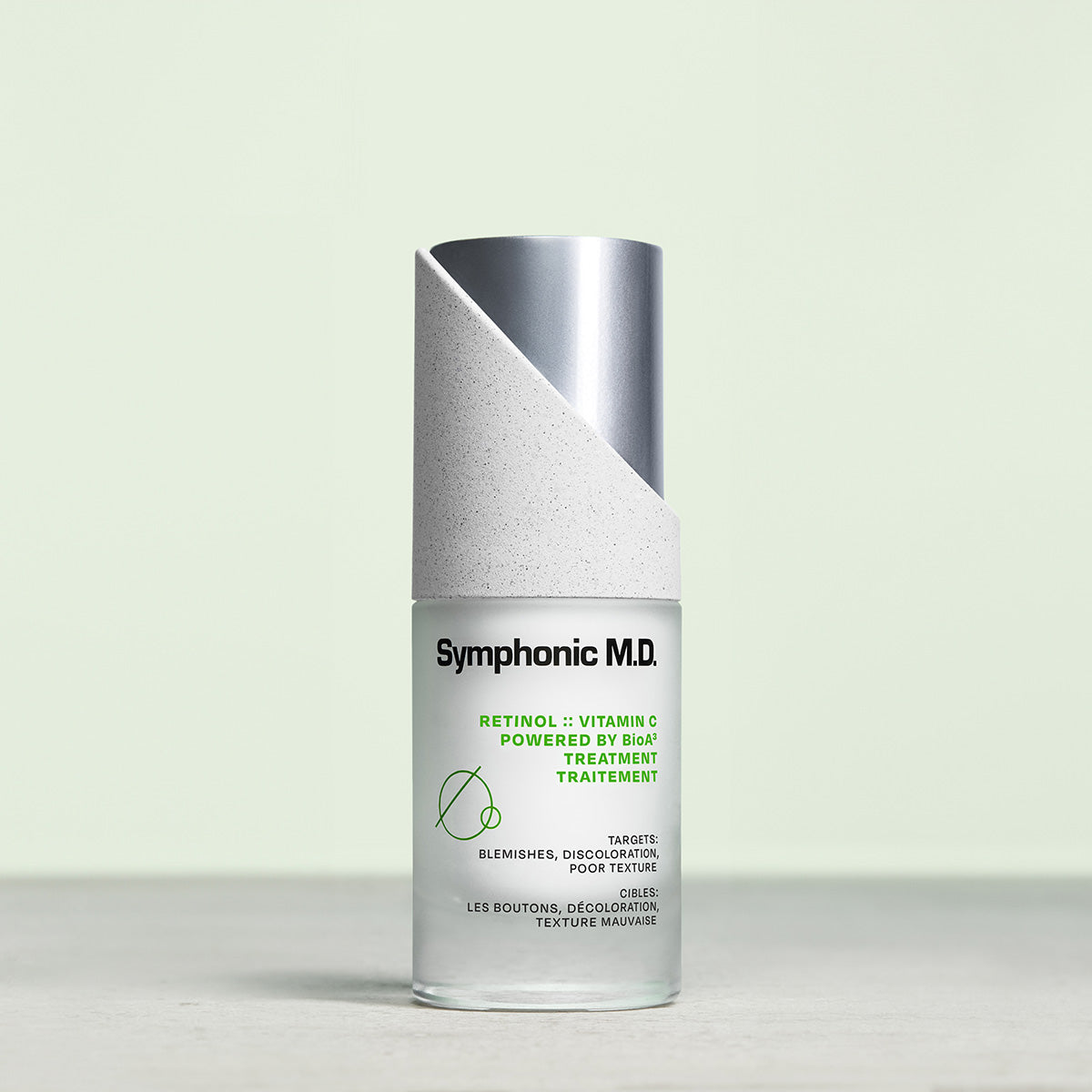
Retinol :: Vitamin C
This anti-inflammatory serum powered by BioA3 targets blemishes, tone, and texture — helping to clear bacteria and smooth skin without clogging pores.
Start slowly
To avoid any negative reactions, slowly allow your skin to become used to retinol. As already mentioned, it’s best to introduce it gradually over six weeks – applying it once or twice a week for the first three weeks, then three or four times for another three weeks. If you’re satisfied you're not experiencing any side-effects, you can begin to apply it daily.
Only use a small amount of product
Because it’s such a strong ingredient, a little goes a very long way. Two to three drops of oil or serum, or a pea-sized amount of cream will be enough to cover your face and neck. Any more than that is wasteful, and could potentially increase the risk of irritation.
Wear SPF
Retinol increases your skin’s sensitivity to the sun, so always apply it in the evening, and use sunscreen the following day. We recommend using an SPF of at least 30 to protect your skin from harmful UV rays that can cause sunburn and premature aging.
Be consistent and patient
There’s no such thing as a quick fix when it comes to skincare – and retinol isn’t an exception. However, you will gain the maximum benefits by applying it regularly, and gradually building up the frequency and strength. In reality, it can take six months to see the most impactful results.
Increasing your use gradually, you can get the maximum impacts while minimizing the risk of side-effects such as redness and dryness.
Increase the strength of your retinol
Carefully climbing the 'retinol ladder' will allow you to gain the maximum benefits of this powerful ingredient.
If you’ve been using your starter retinol for three months, and you’re applying it daily without irritation, it might be time to step onto the next rung of the ladder by using a higher concentration. This is especially important if you haven’t noticed any benefits yet, because your skin may need a higher strength formula.
As your skin adapts, you might experience some side effects, but they should pass relatively quickly.
The bottom line
Serums, oils, and creams containing a low concentration of retinol are all suitable for beginners, and which you choose comes down to your personal preference and skin type.
However, how you use retinol is just as important as the product you choose. By following our guidelines carefully, and increasing your use gradually, you can get the maximum impacts while minimizing the risk of side-effects such as redness and dryness.
Try our Retinol :: Vitamin C Powered by BioA3 Treatment which combines nourishing and hydrating ingredients to offset irritation, and enjoy all the benefits this incredible ingredient has to offer.
FAQs
Why does retinol irritate sensitive skin?
Retinol is a powerful ingredient that has a big impact on your skin, and as such, it can cause irritation to all skin types during the first few weeks of use – especially sensitive skin which is already prone to redness and dryness. However, if you use it carefully, and gradually allow your skin to get used to it, you can minimize any side-effects.
Can retinol be used on all skin tones and ethnicities?
Provided you introduce it gradually and follow precautions, retinol can be used on all skin tones and ethnicities. If you’re particularly pale, for example, you may be more sensitive to the sun, so there’s an even greater need to apply a strong sunscreen the following day. Speak to a dermatologist if you're in any doubt about using retinol.
At what age should you start using retinol?
When you begin using retinol will depend on your skin type and why you’re using it. If you have acne, for example, you might start using it in your teenage years. In general though, it’s advisable to start using retinol in your 20s to get a head start on preventing the premature signs of aging.
However, it’s never too late to begin. Retinol can be hugely beneficial for those who already have pronounced signs of aging, such as wrinkles and age spots.

